The post Collisions Festival – a weekend of connection among interactive art, wild ideas, and playful humans appeared first on Curiosity Collider.
]]>A hand-crafted glockenspiel that plays the genetic code of two invasive plant species by
— Katie Compton (@KatComScience)
This was the scene at Curiosity Collider’s inaugural Sci-Art festival The Collisions Festival: Invasive Systems at the VIVO Media Arts Centre from November 8th to 10th. The three-day festival contained work by six individual artists and three artist and scientist collaborative teams. Artworks were a balance of new and traditional medias and explored the delicate and complicated nature of how living things interact with and influence each other and their environment – from technology and infections to pollution and invasive species.
The opening reception, attended by about 100, featured a performance of “The Moose are Life” by sound artist, songwriter and composer, Edzi’u, which speaks to the effects of the colonial inheritance of Indigenous peoples in Tahltan Territory. One participant commented in our post-event survey, “The performance piece about moose was extraordinary, impactful, and valued. Thank you for sharing that.”
Collaborating artists and scientists were also present at the opening night, and this led to great moments of organic interactions. With their curiosity peaked by the artworks, attendees engaged with the collaborative teams inquisitively about their art and the scientific concepts behind them, including questions about the blood brain barrier and invasive plant species and more. Another participant commented, “So happy I went – and brought my 7-year old daughter who was fascinated, thrilled, and intrigued. Loved the collaborative works with artists and scientists and that they were there to talk about their processes and work on the opening night.”
show was so fascinating in so many ways, my brain now feels like it is on fire.
— Raymond K Nakamura, Ph.D. (@raymondsbrain)
Amazing experience with Thanks for creating this beautiful puzzle to highlight the interactions microbes have with the brain! Quite a puzzle for us researchers!
— Linda (@Linder_surprise)
Collisions Festival 2019 showcased what science-art has to offer: playful learning, joyful connection across boundaries, and engagement with complex aspects of our world.
Getting an awesome curatorial tour at 's Collisions Festival — on all weekend in .
— Art the Science
(@artthescience)
Media Coverage
- (featuring Collisions Festival collaboration by artist Laara Cerman and geneticist Scott Pownall). Global News. 26 Nov 2019.
- . Science Borealis blog. 18 Nov 2019.
- . Art the Science blog. 19 Nov 2019.
- (at 9:30). CITR Radio. 8 Nov 2019.
- . CBC Radio (ICI Radio Canada). 7 Nov 2019.
- . Emily Carr University of Art + Design News. 7 Nov 2019.
Photos
Acknowledgement
We acknowledge that Collisions Festival and its events take place on the traditional, ancestral, unceded territories of the xwməθkwəy̓əm (Musqueam), Skwxwú7mesh (Squamish), Stó:lō and Səl̓ílwətaʔ/Selilwitulh (Tsleil- Waututh) Nations. We are grateful for the opportunity to live and work on this land.
Curiosity Collider and VIVO Media Arts Centre gratefully acknowledge the support of:
- and our printing sponsor
The post Collisions Festival – a weekend of connection among interactive art, wild ideas, and playful humans appeared first on Curiosity Collider.
]]>The post Call for Submissions: Collisions Festival Sci-Art Exhibition appeared first on Curiosity Collider.
]]>The post Call for Submissions: Collisions Festival Sci-Art Exhibition appeared first on Curiosity Collider.
]]>The post Her Story: Canadian Women Scientists appeared first on Curiosity Collider.
]]>The post Highlights from Heart & Art appeared first on Curiosity Collider.
]]>The post Highlights from Heart & Art appeared first on Curiosity Collider.
]]>The post Highlights from Night Shift: Quantum Futures appeared first on Curiosity Collider.
]]>Night Shift: Quantum Futures (April 5, 2018) was hosted by UBC Museum of Anthropology and curated by Curiosity Collider Art-Science Foundation, with collaborations from UBC Department of Physics & Astronomy and Stewart Blusson Quantum Matter Institute. This video was created by Curiosity Collider for the event “Et al 3: The Ultimate Bar Science Night” in Vancouver, BC on September 18, 2018.
Photo credits: Sarah Race and Theresa Liao
Music credit: “Quantum” by MMFFF
Participating artists and scientists: Alexander Sheyerman, Angelica Poversky, Étienne Lantagne-Hurtubise, Inverso Productions (Poet: Barbara Adler; Choreographer: Lesley Telford), James Day, Kathryn Wadel, Lesley Telford, Matt Horrigan, Niel Mclaren, Oguzhan (Oz) Can.
The post Highlights from Night Shift: Quantum Futures appeared first on Curiosity Collider.
]]>The post Interstitial: an artistic exploration of the complex dynamics of gender in science fields appeared first on Curiosity Collider.
]]>is an ocean-going marine geophysicist by day and printmaker by night. Her work in the exhibition consisted of six portraits, profiling six of Canada’s most decorated and noteworthy women scientists:
- Ursula Franklin, a metallurgist and physicist
- Harriet Brooks, Canada’s first woman nuclear physicist
- Alice Wilson, Canada’s first woman geologist
- Irene Ayako Uchida, a world-famous Down syndrome researcher
- Maud Menten, a physician and biochemist
- Trixie Moorsley, the first woman, and person, to receive a Doctorate in Computer Science
Each of these portraits is intended to bridge a gap between the achievements of these women and their place in history. Ele created these elegant portrait prints by carving the images into the negative space of the linolium. This means that the representations are faithful once dipped in ink and stamped. Along with the prints, QR codes provided a more in-depth biography of each woman, to help with Ele’s aim of education through art.
, who also presented at last month’s Collider Cafe, is a conceptual artist and professional sculptor. The inspiration behind her work comes from a deeply personal place. Her genetic lineage contains a certain gene that greatly inflates the risk of cancer, and she has lost several family members, including siblings, due to this. Cheryl is now the president of Hannah’s Heroes Foundation, a research partnership with scientists at B.C. Children’s Hospital, through which she supports cancer research in B.C.
Her experiences dealing with helplessness, modern medicine, and grief came through in her drawings and paintings. The imagery that she created blends emotion into complex biological structures, inspired by the microscopic scenes viewed by cancer researchers. Her ability to explore her turbulent relationship with these tiny actors so intimately gives us some insight into both the pain of loss, and the beauty of coming to terms with that loss. While Cheryl’s work did focus less on scientific women and more on personal stories, the power in it is undeniable.
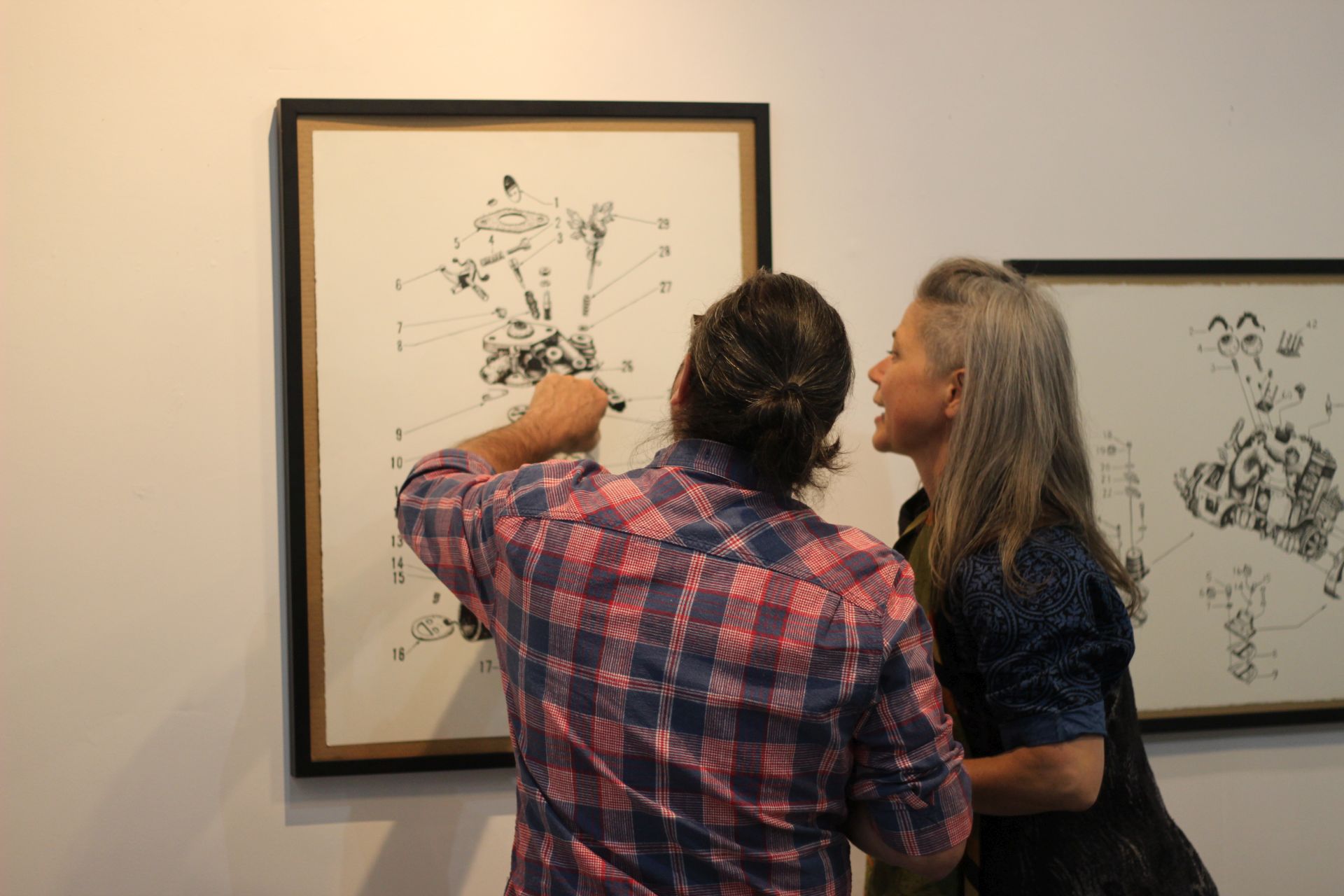
is a medical illustrator, and this unique perspective gives her insight into the world of medicine, and medical professionals. Capitalizing on this unusual position as both outsider and insider, Paige used her digital imagery to explore the spaces that women are carving out for themselves, which are often outside the public eye. Just as she is able to exist in her uncommon role as a medical illustrator, Paige’s work shed light on the blossoming variety of positions and opportunities for women within the scientific industry, and the bright future inherent in this.
As an interesting side note, Paige met Katrina, the model for her work, at a previous Collider Cafe, which is a wonderful testament to the opportunities for collaboration between talented, curious individuals in this multidisciplinary unity.
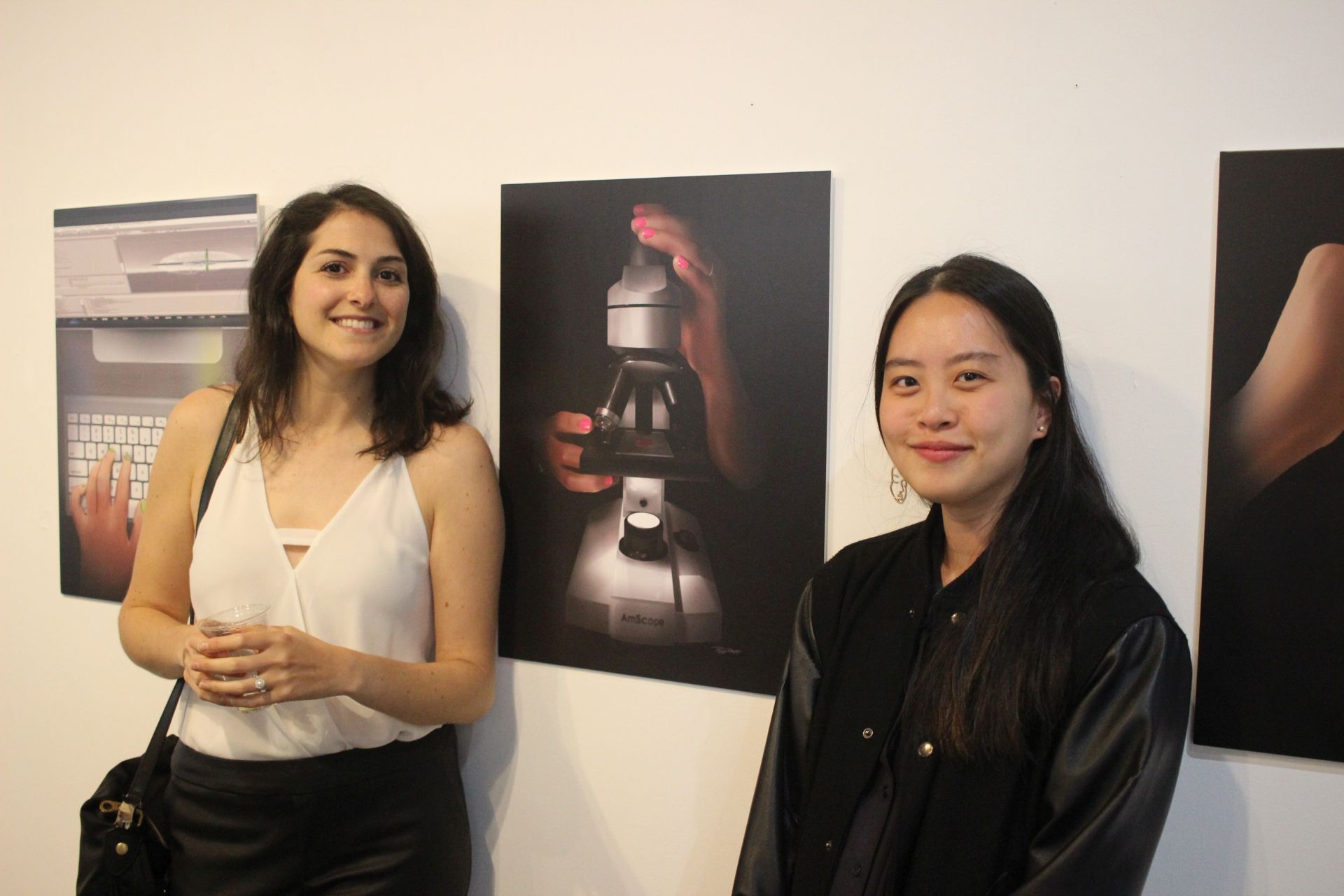
Acknowledgement
We would like to thank and for their generous support for this exhibition and associated events.
The post Interstitial: an artistic exploration of the complex dynamics of gender in science fields appeared first on Curiosity Collider.
]]>The post Collider Cafe: Art. Science. Chronicles. On coping with devastation through art and creativity appeared first on Curiosity Collider.
]]>The evening’s first presenter was , a visual artist whose work is heavily influenced by her background in science. Her portfolio of photography and drawings examine a strange space where organic and biological components mingle with the inorganic, plastic influence that we have on our environment. The central tenet of her work is to identify and explore the unnatural synthesis between the natural world and the impact of industry. Within her presentation was work from several series, mostly based around field work that she had undertaken in different locales. One collection, inspired by work in Iceland, depicted various sea creatures gathered from tide pools, their decay, and the damage done to them by plastics in the ocean. Another, from an Artist in Residence stint in Nunavut while studying the impact of invasive species, explored the impact of pollution on even the most isolated areas. Overall, Rachel’s art exhibits a stylistic similarity to scientific illustration, but with an alien, slightly dystopian, alternate biological timeline as its subject matter.
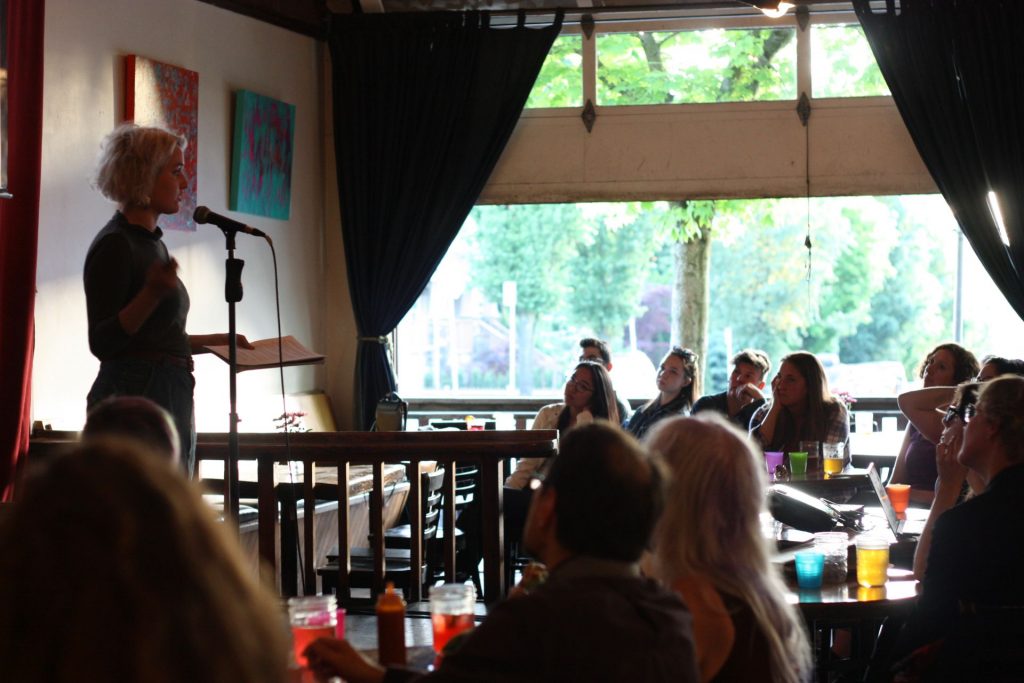
Next up was , a science cartoonist, who uses cartooning as a means of both education and introspection. Armin began his presentation discussing his own struggles with depression and anxiety, as well as the difficulty of initiating and maintaining a creative work ethic. He described the importance of balancing optimism and pessimism in the creative process, and the value that comes from doing and sharing work, as opposed to relentless self-criticism and editing. After this, he recounted his experiences producing several educational comic strips for school children. The first two comics were successful, helping kids learn about the importance of sleep and mental health, respectively. Armin’s main anecdote revolved around the creation of his third comic, about nutrition. While he was supposed to be developing his pitch for it, he suffered a broken ankle, and the loss of his grandmother. In this time of grief and helplessness, he found inspiration in his grandmother’s courage and self-confidence, which she has used as an Iranian immigrating to France. The drive to, as Armin put it, “actually do sh**,” led to his developing a completely interactive, cross-cultural, pirate-themed nutritional education game, which wowed the children and adults who experienced it.
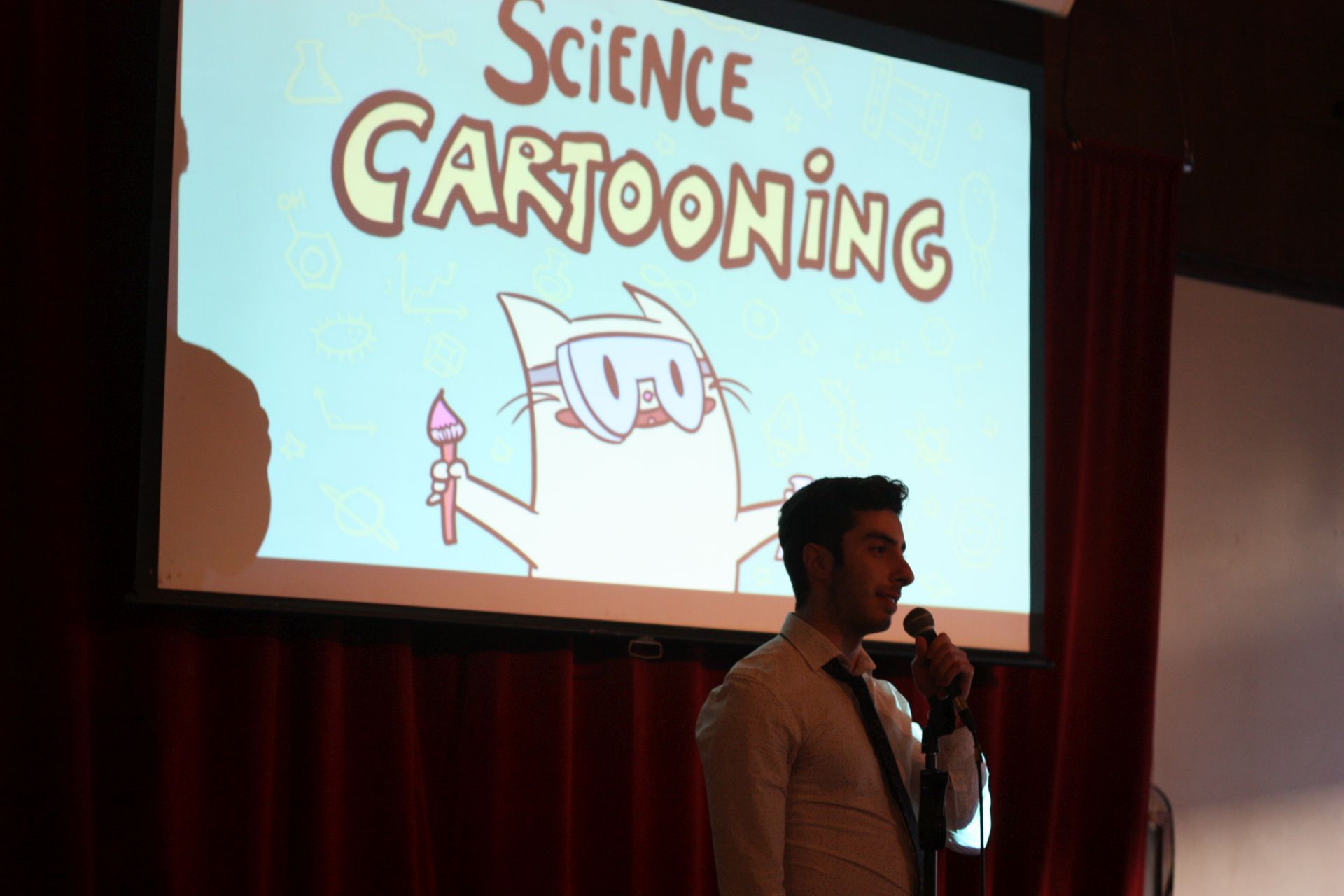
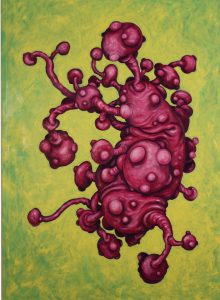
Our third presenter of the evening was , a conceptual artist and professional sculptor. She expounded on the impact that an extremely rare syndrome caused by the mutation p53 gene, called ‘Li-Fraumeni,’ had had on her family, and how she used drawing to come to terms with the consequences of this mutation. Li-Fraumeni puts carriers at an extremely high risk of cancer, up to 90% by the age of 60. Cheryl’s family had been devastated by this mutation, and she coped with the loss through drawing, or as she calls it, ‘dreaming while awake.’ After losing her brother while he was just a child, her sister while in her 30’s, and her young niece, Cheryl, who luckily does not carry the mutation, became deeply involved with ‘,’ her sister’s research partnership with scientists at B.C. Children’s Hospital. They raised money to purchase equipment for imaging glial (brain) cells, and these images are the foundation of Cheryl’s work. Each drawing is an artistic study of the various emotional relationships that she experienced during her sister’s battle with cancer. The work explored aspects of neuroanatomy, such as the brain stem, frontal cortex, and even individual strands of DNA. One of the most powerful pieces came from Cheryl’s working through the discovery that she was a bone marrow match with her sister, and the fundamental bond that these transplants created between the two of them.
Following Cheryl was i, a comedian, humorist, and technical writer/editor. Her talk flowed organically and expansively, touching on many subjects throughout her life, education and career. She began with her youth in Saskatchewan, going to ‘bush parties’ in the Duck Mountains. This early exposure to rugged terrain instilled a geological interest throughout her early life. In university, she began to wonder about life’s big questions, explored through her degree in philosophy. This led into several writing projects, including science fiction work, several published papers on the history of science, and work on ontogeny versus phylogeny, during her pregnancy. Her combination of writing aptitude and scientific knowledge led her into a career as a technical writer, along with her stand-up comedy pursuits. Marlene’s comedy plays with fluid language concepts that link the mechanical world of science and engineering, with the lust and sexuality of human bodies. She concluded by showing a video of one of her jokes, a sexually-driven bit about Schrodinger’s Cat and quantum mechanics.
The final presentation of the evening was a personal story told by , a science communicator and researcher, who is involved with , an organization that holds story-telling events. Kayla’s story was about the journey through an unusual but excruciating back pain problem. She walked us through the first occurrence of it, as well as the physical and mental drain of ongoing back problems. Tied up within her story were several misdiagnoses, including for an incredibly rare spinal fusion disorder. Throughout this painful, disillusioning process, Kayla fortified herself mentally, always prepared for another terrifying misdiagnosis. When her condition was finally nailed down, as fibromyalgia, she found little relief in having a label for her pain, and her anxiety settled in. Now, older people slap her on the back, telling her that she doesn’t know real pain, or call her a hypochondriac, while she frequently has to turn down the opportunity to surf or hike with her friends. Kayla left us, and closed the evening of presentation’s, with one final question: who else around us is suffering silently?
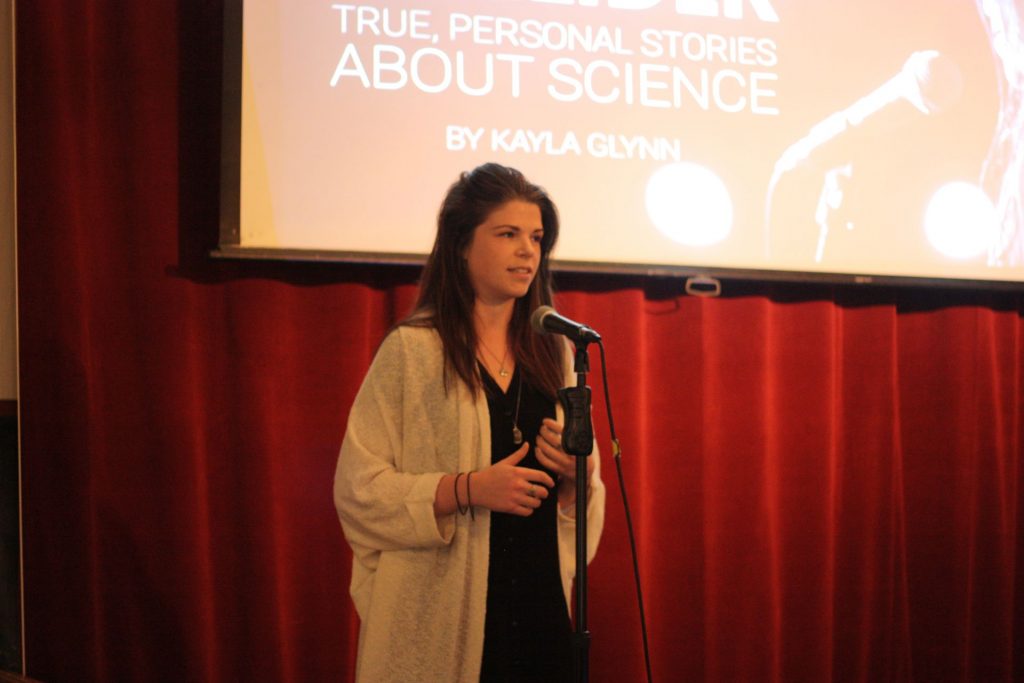
Thanks to Cafe Deux Soleils for once again hosting Collider Cafe! Collider Cafe will be back in September to bring you more mingling of art and science.
The post Collider Cafe: Art. Science. Chronicles. On coping with devastation through art and creativity appeared first on Curiosity Collider.
]]>The post Quantum Futures: an artistic journey into the realm of quantum mechanics appeared first on Curiosity Collider.
]]>At the entrance of the Museum of Anthropology, created an audio-visual performance, based around his understanding of the study of quantum physics as an art of subtraction. His piece came to life by excluding more and more elements from the viewer/listener’s perceptual field, until only its generic components remained. By examining and analyzing the interactions of the foundational sounds and images, the piece offered a glimpse into the axiomatic structures of the universe.
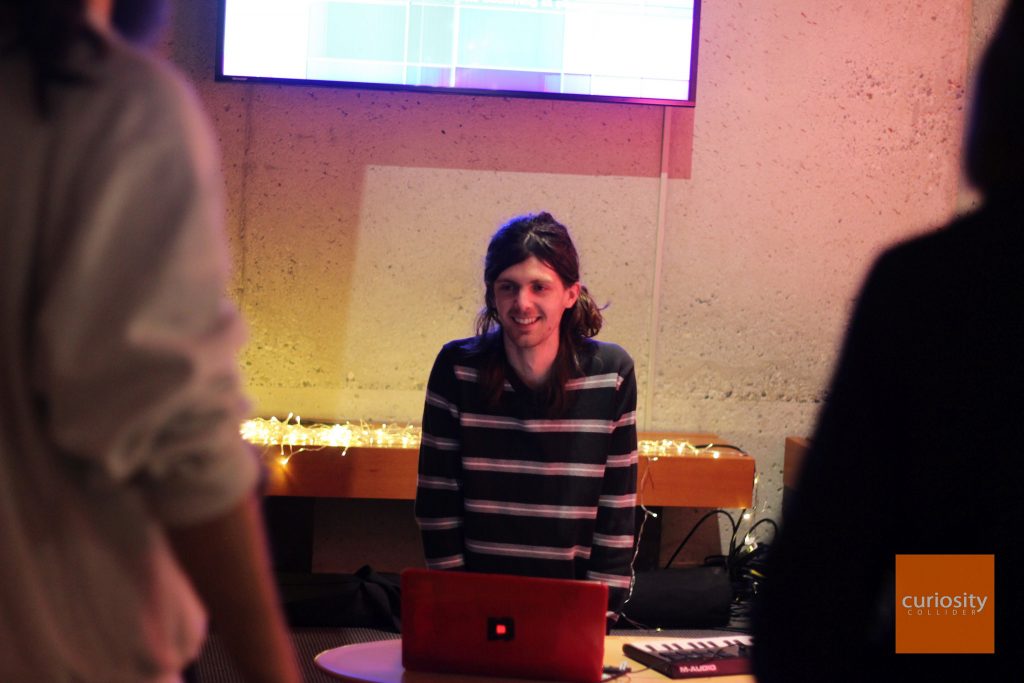
‘s virtual reality experience was a play on the many-worlds interpretation of quantum mechanics. This theory posits that there are multiple alternate realities, possibly even an infinite number. In Niel’s work, we were transported to a parallel universe where we can question our idea of reality. What possibilities could alternate timelines hold? What makes our universe more real than others? What makes the physical universe more real than a digital one? These are the kind of provocative questions that this incredibly immersive technology will help us discuss in the future.
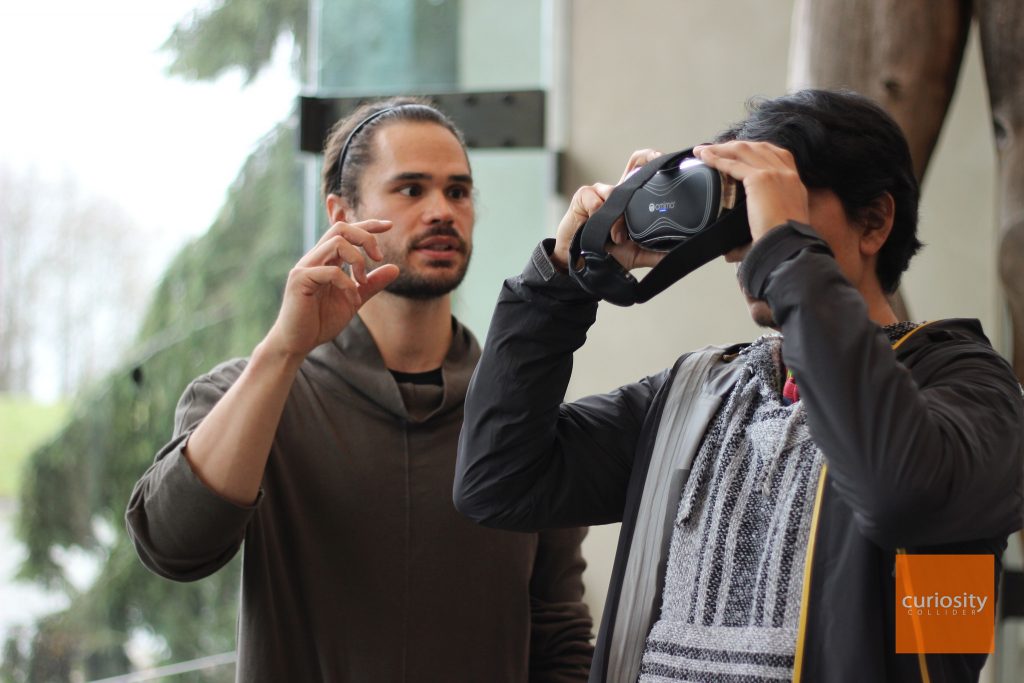
Curiosity Collider also worked closely with physicists from the Stewart Blusson Quantum Matter Institute, to develop hands-on activities that engaged people’s creativity, in order to engage them in discussions about the quantum world. Attendees learned the symbolic language that physicists use to describe the behaviour of subatomic particles, and were taken through a guided activity to learn how quantum materials are constructed. The guiding physicists presided over the activities, while answering any questions that the attendees had about the weirdness of the quantum world.
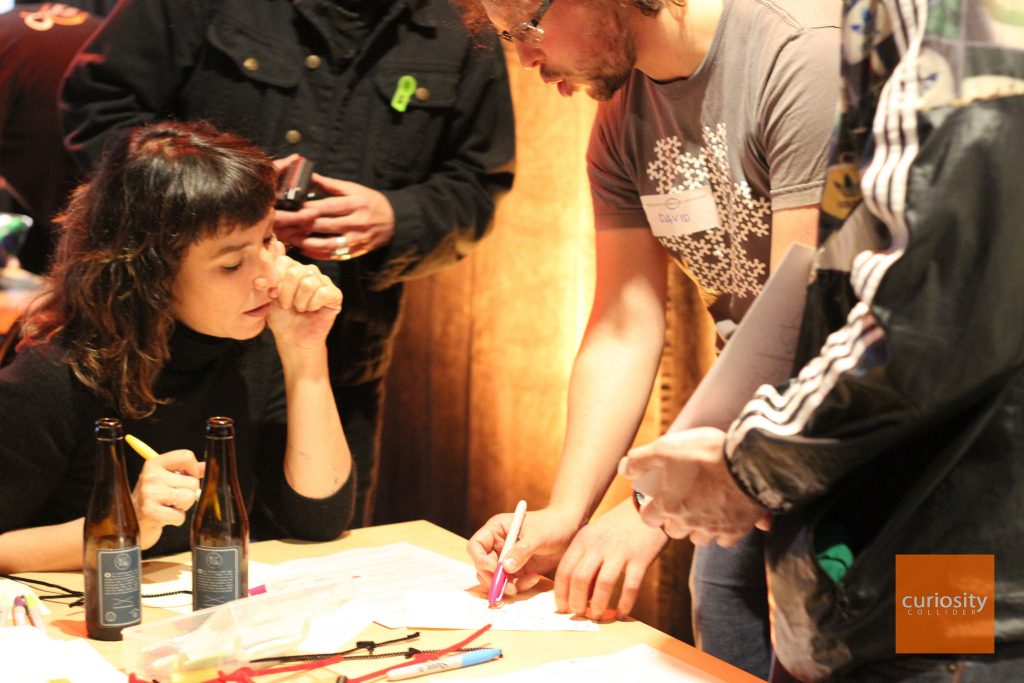
Within the Great Hall of the UBC Museum of Anthropology, we were treated to an evening of performances involving spoken word, projection sculpture, and dance, all of which confronted the border between our humanity and quantum peculiarity. The evening’s first performance involved the spoken word poetry of . Her three poems, all presented with great enthusiasm and energy, brought personality and relatability to the nano-scale of the subject matter. Angelica’s first poem, called ‘Strands,’ was a look into the invisible threads that influence our behaviour and interactions, and help to create the personal, subjective worlds that we each experience. Within her exploration of both the infinite and infinitesimal, she ended with a call for community and humanity between us all. This was followed up by her second poem, which gave a look at love through a quantum lens. In the contradictory feelings that we experience when lovestruck, a metaphor with the superposition of particles was formed. Capturing the ‘definite indecision,’ of our brains ‘on love,’ we got a chance to imagine how we can dive head first into the indeterminacy, and find meaning and peace in the uncertainty. Her reading concluded with ‘Stillness,’ a reflection on the role of observation and meditation. We are constantly trying to comprehend and analyze, yearning for the ‘tiny floating answers we seek.’ This final poem was a plea to both the acknowledgment of the things that we can’t know, as well as how our observations help to shape reality.
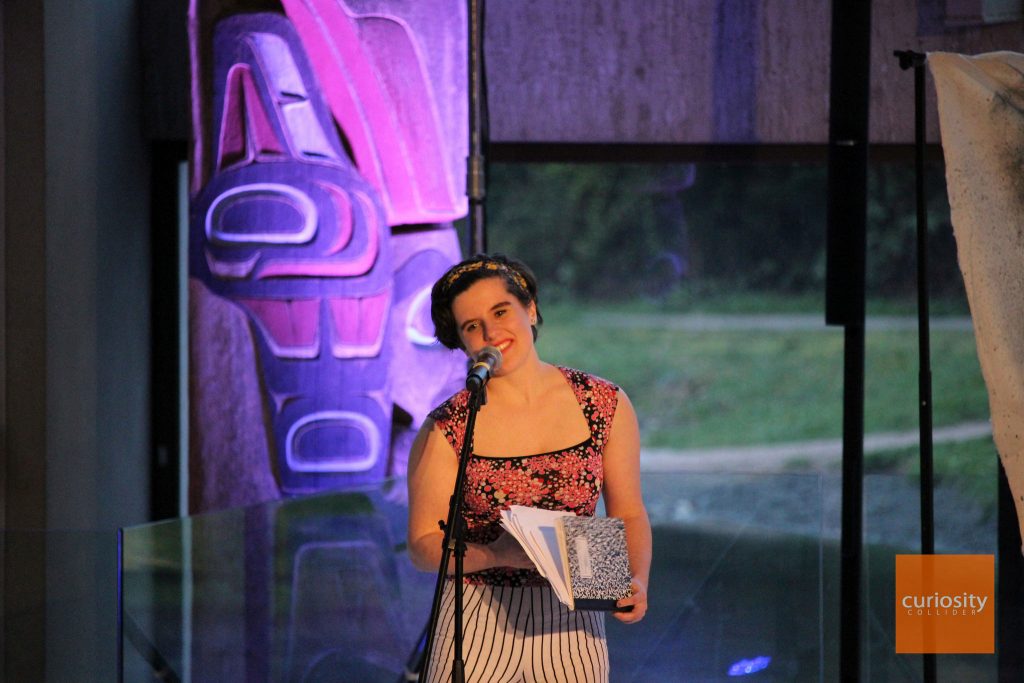
Next up was , and her projection sculpture, entitled ‘Particle Wave.’ This piece was based on research that she had undertaken at , Canada’s premier particle accelerator, located just off the UBC campus. Her intention behind the work was to explore light as a medium for particle detection in physics, and for illumination in all contexts. In the 8 minute and 20 second video, which is the exact time required for a photon to travel from the sun to Earth, the viewer begins situated on a train car, traveling backwards as the tracks and platform recede. Throughout the increasingly psychedelic journey, the train tunnels warp into particle colliders, as we take on the photon’s eye view of its path through an accelerator. Accompanied by the ominous, electronic drone of the soundtrack, this projection sculpture created a hypnotic effect, along with feelings of timelessness.
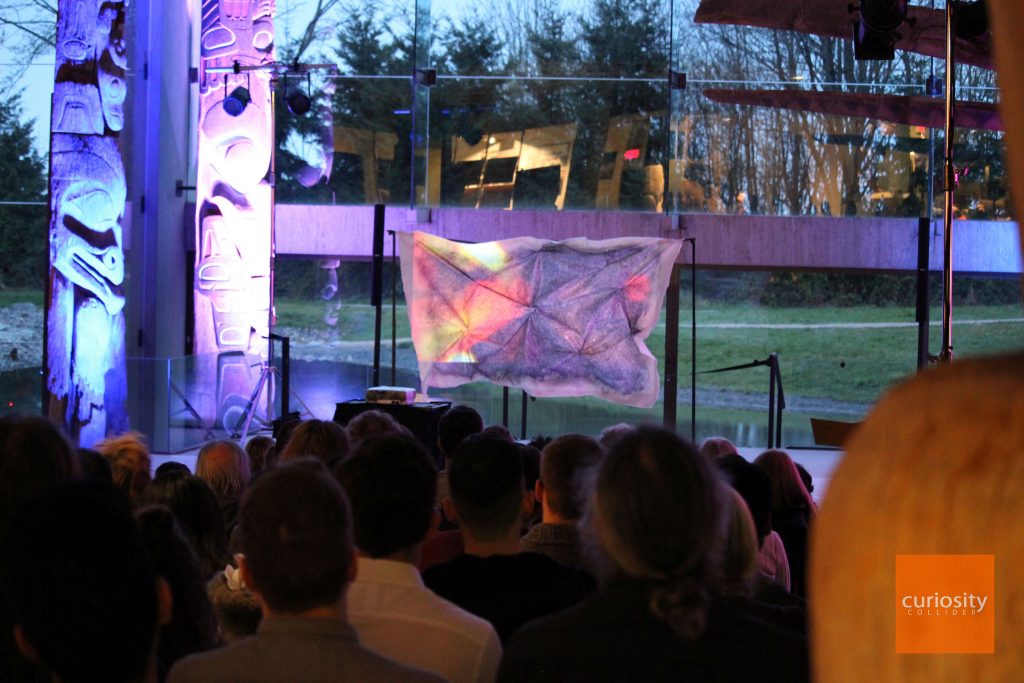
The final performance of the night was a contemporary dance act, choreographed by , and inspired by the mysterious phenomenon of quantum entanglement. Beginning with a tableau featuring the six dancers, movement, as well as interconnection and feedback between them, initiated slowly. This swell of ballistic movement brought the dancers to life, and they were soon flying back and forth across the performance space, in complexly connected patterns. As the dance moved through periods of chaos and grace, the stage was occupied by varying combinations of soloists, pairs, and groups, each with a unique bond within a pattern of entanglement. With a narrative structure driven by a voiceover monologue, we lived out the struggle of a quantumly entangled pair, exploring their strange connection, as well as the meaninglessness of time brought on by entanglement.
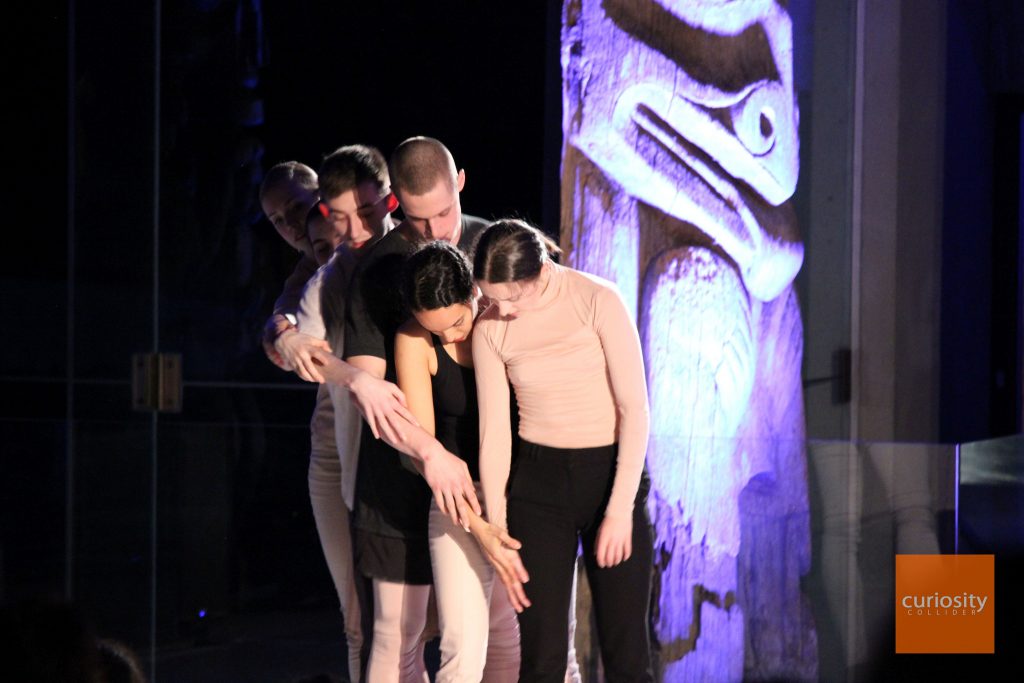
As a whole, the evening was a fascinating look at the many wonderful aspects of quantum mechanics, with great insight into how we can integrate them into our own lives and experiences. Thanks to the UBC Museum of Anthropology for hosting the event, and for all of the contributions from the artists and scientists alike.
The post Quantum Futures: an artistic journey into the realm of quantum mechanics appeared first on Curiosity Collider.
]]>The post Call for Submissions – Interstitial: Science Innovations by Canadian Women appeared first on Curiosity Collider.
]]>The post Call for Submissions – “Quantum: Future Possibilities” appeared first on Curiosity Collider.
]]>